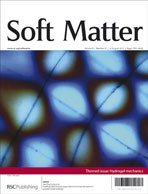We have performed various types of biaxial stretching for Tetra-PEG gels which correspond to nearly ideal polymer networks with small amounts of structural defects. We have found that (1) the Neo-Hookean (NH) model, which has been considered as a model for ideal polymer networks, evidently fails to describe the biaxial stress–strain data especially in the large strain regime; (2) the stress ratio σPS−y : σPS−x (where x and y are the stretching and constrained directions, respectively) in pure shear deformation is much larger than the expectation of the models with no explicit strain-coupling term, and the stress ratio increases with an increase in polymer concentration. These findings indicate that the two effects, i.e., finite extensibility and strain-coupling between different axes, should be explicitly introduced in the strain energy density function. We extend the Gent model, which considers the finite extensibility effect on the basis of the NH model, by adding an explicit strain-coupling term. This extended Gent model successfully describes the whole biaxial data for the Tetra-PEG gels with various polymer concentrations. This model employs the first and second invariants of deformation gradient tensor as the two variables, and it includes the three parameters, each of which represents the number of network strands, the strength of strain-coupling between different axes, and the maximum value of the first invariant.

You have access to this article
 Please wait while we load your content...
Something went wrong. Try again?
Please wait while we load your content...
Something went wrong. Try again?


 Please wait while we load your content...
Please wait while we load your content...